A Sommelier's wine secrets
Menu
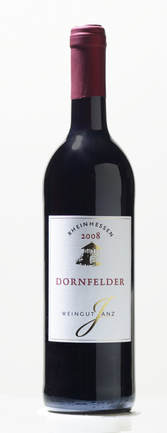 When one thinks of German wines, one automatically thinks of big blonds…I mean white wines. You know, the typical Riesling, Müller-Thurgau or Silvaner. However, on occasion you will find a seductive red with great body that comes from Germany. The most common red German wines being Spätburgunder (pinot noir), Portugieser, Trollinger and Dornfelder. I’ve discovered a wonderful Dornfelder wine made by Sander Winery just outside of Frankfurt. This organically grown red wine possesses notes of red currant and boysenberry with delicate tannins and low acidity. In other words, it’s gulpable. The Dornfelder grape was actually an experimental hybrid created from the Helfensteiner and Heroldrebe grapes, whose primary purpose was to add color to blended wines. Dornfelder wines pair well with regional sausages, barbequed meats, sauerbraten, and dark chocolate. Just a thought….a glass of Dornfelder with a Ruben Sandwich would be sehr gut. The most gratifying occurrence for any wine drinker is to discover a great tasting wine for less than you’d expect to pay. I’m not talking about that wonderful little Barolo for $9.99 that was actually missing a 9. I’m talking about the wine you find yourself buying again and again because it tasted good yet was relatively inexpensive, so you felt like it was a good value for your money. As a Sommelier I'm always getting requests to seek out the Holy Grail of all wines; a well-balanced, well-made Burgundy for $9.99 or less. I think that’s called a pipe dream. I did, however, find wines that I would consider a good value. The actuary in me demands a specific calculation to quantify, in precise terms, what constitutes a “good value”. I’ve devised an equation which takes into consideration the price and quality of the selection, then minimally adjusts for numerical accolades and the dust-on-the-bottle. An example of an OK value would be because, although the wine is considered superb, you’re paying a high price for that prestige. I would consider Gazela Vinho Verde for $4.99 a good value because the quality of the wine is moderate even though the price is low. William Fevre Chablis is a great value since the quality is proportionately higher than the price. Lastly, Daou Cabernet Sauvignon for $25 would be an outstanding value because at $25 you get high quality wine. At any price, the best wine is the wine that makes you happy. If you just so happen find yourself passing by the quaint college town of Chico, California, you should definitely go out of your way to experience the Sierra Nevada Brewing Company’s Hoptimum Beer tour. Not only will you be blown away by the caliber of the tour itself, but the amazing beer samples at the end are a treat not be missed. As a bonus, you’ll come out much more knowledgeable about the craft beer brewing process, such as how the quality of the ingredients affects the final product, what hops are and even learn about the illustrious history of the founders.
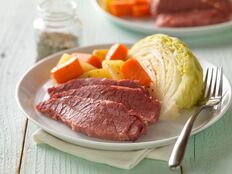 When you think of the traditional St. Patrick’s Day dish, Corned Beef and Cabbage, one automatically thinks of whisky and beer, not wine. That may have something to do with the fact that Corned Beef and Cabbage is difficult to pair with wines due to the meat’s strong briny flavors and bold spices. This particular dish requires an off-dry and fruity white wine or a fruit forward and highly acidic red wine. Sorry, Baileys Irish Cream doesn’t count as a wine. The best white wines to pair with Corned Beef and Cabbage include Pinot Blanc (from Alsace), Riesling, Fume Blanc, Sauvignon Blanc and Viognier. These particular white wines have tropical, citrus and pear flavors, as well as high acids. Red wines that harmonize well with this dish include Pinot noir, Chianti Classico, Grenache and Shiraz, all of which typically possess dominant fruit flavors and nice acid, which will stand up to the boldness of the beef. 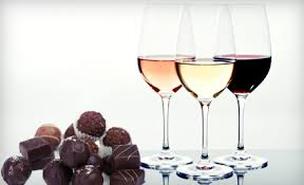 Now that we are starting to be inundated with images of chocolate for Valentine’s Day, here are some simple guidelines for pairing your goodies with wine. These pairings will ensure that you’ll bring out the best qualities in both the wine and chocolate, while not allowing one to dominate the other or creating a clash of flavors. First, there are two important rules to remember when pairing wine and chocolate. Rule I – The wine should be at least as sweet, if not sweeter than the chocolate you are serving it with. Otherwise, the taste may veer towards sour. Rule II - When pairing wines with chocolate, it’s better to match lighter, more elegant flavored chocolates with light-bodied wines and stronger flavored chocolates with full-bodied wines (Slinkard, 2007). Here are some examples of pairings that you may want to try: White Chocolate - pair with Sherry, Moscato d’Asti or Orange Muscat. Milk Chocolate (This also applies to creamy chocolate mousse or chocolate cheesecake) - pair with a light bodied red such as a Merlot or Pinot noir. These also go well with whites such as Rieslings, Muscats or dessert wines. Dark Chocolate - pair with full-bodied wines which have notes of roasted coffee or chocolate, such as Cabernet Sauvignon or Zinfandel.  Hey winemakers! If you find yourself in a Pinot noir crisis due to yield shortages, increased demand or simply outrageous pricing, don’t despair for there is the other pinot; Pinot meunier, to be exact. Pinot meunier is actually just a mutation of Pinot noir, so they have similar taste profiles and growing requirements. Yet, for those winemakers with concerns for global warming, meunier is not only well suited to grow in cool climates; it actually ripens earlier than Pinot noir. A native to Burgundy and Champagne, Pinot meunier is one of the three grape varietals used in the production of Champagne. In fact, Pinot meunier is the most planted varietal in that region with a total planted acreage equal to both Chardonnay and Pinot noir combined. Historically, the wine is consumed young, so no worries about aging in barrels or getting it to the shelf in time to sell. The fruity, soft characteristics of the varietal contribute to the youthfulness of the wine. In Oregon there are only three vineyards produce 100% Pinot meunier; Chateau Lorane, Willakenzie and Amalie Roberts. Just think, in a few years, with a really aggressive marketing plan (and maybe a movie) to ensure skyrocketing demand, we could have a Pinot meunier crisis on our hands. There’s just something inviting about a Bordeaux blend. Maybe it’s the rich, full-bodied, hefty sensation of blackberry and black cherry flavors with notes of spices, chocolate and vanilla. It might be the way they complement dishes that contain game, venison or pheasant. There’s no doubt that a Bordeaux blend is the classic example of a great wine. A true French Bordeaux blend requires the combination of two or more specific grapes, such as Cabernet Sauvignon, Cabernet Franc, Merlot, Malbec, Gros Verdot, Petite Verdot and St. Macaire. There is also such a thing as a white Bordeaux blend which contains Sauvignon Blanc and Semillon grapes.
Here in the United States, we have historically referred to such Bordeaux blends as “Meritage,” providing they meet certain varietal requirements. In the late 1980’s, a few American (Californian) vintners coined the “Meritage” name to circumvent varietal labeling requirements and increase market share. The name itself was actually a blend of two words, Merit and Heritage. Meritage quickly became associated with an exceptional, high quality blended wine and not your generic, everyday, red table wine. So, if you’re shuffling through the wine store seeking out a deep, rich wine, the odds are pretty good that a Meritage, or even better, a French Bordeaux will not only meet, but exceed your expectations. Not everybody is enamored with a heavy, over-oaked wine like the traditional California Chardonnay. Recently, there has been a movement away from this style to a cleaner, more modern style white, which is not fermented in oak. This actually results in a more food friendly wine. Although un-oaked white wine is the current trend, it is not really a new idea. Hundreds of years ago, winemakers discovered that certain wines do not take well to oak. These include Pinot grigio, Albarion, Torrontes and Sauvignon blanc. Chardonnay can go both ways, depending on the winemaker’s preference. The classic Chablis-style Chardonnay is oak-less with higher acids creating a crispness many people prefer. There are actually whole regions in France where oak is absent (probably outlawed) from the white wine making process, such as wines from the Loire, Alsace, Macôn, Bordeaux, Bergerac, Jurançon and Chablis. This is also the tradition with German Rieslings, for they never, ever touch new oak barrels.
If you like your reds oak-less, than you might enjoy a Beaujolais (Gamay) from France, Grenacha or Tempranillo from Spain, or a Bonarda from Italy. Another thing you might like about oakless red wines is that they are generally cheaper and made to be drunk. 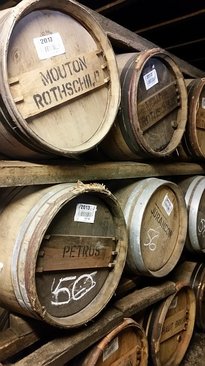 There’s no doubt in my mind that wine fermented in oak barrels has a very different and distinct flavor than wine fermented in stainless steel. The phenolic material from an oak barrel ultimately imparts a variety of flavors depending on the growing region of the trees, tightness or width of the wood grain and toasting levels (light, medium or strong) of the barrels. The flavors that the wine barrels impart into the wine are technically called organoleptic characteristics. The French oak used in making barrels comes from three particular growing regions in northern, eastern and central France. In general, French oak possesses organoleptic characteristics of butter, smoke and clove. Each region imparts additional, unique flavors in the wine. For example, oak from the north-central region possesses flavors of spice, while the south-central regions impart vanilla. Eastern France produces oak barrels that taste greenish or like spicy pears or apples. Milky, cinnamon spices are found in oak from the central regions of France. American Oak imparts organoleptic flavors of dill, cucumber, coconut, baking spices and vanilla. My task of the week was to procure a white Spanish wine for a Spanish-theme dinner party this Sunday. I know this is an unusual request, but when the hostess says to bring a white Spanish wine, you bring a white Spanish wine. Any other time I would be glad to bring something local. As you may know, whites are not Spain’s strong suit when it comes to wine. So I knew that finding an acceptable white Spanish wine was going to be quite challenging, if not impossible. I know I learned somewhere that Spain has managed to grow a handful of white varietals such as Viura, Parellada, Xarello, Verdejo, Airén and Albariño, as well as the token Chardonnay, Sauvignon Blanc and Gewürztraminer. My search narrowed to an Albariño from the Northwest region of Spain, Rías Baixas (ree-ass by-shuss). The Rías Baixas Albariños are far from the stereotypical (nasty) Spanish white wine. They are famous for their delicate, lively aromas and flavors that pair perfectly with shellfish. Because my search for this elusive wine was limited to Salem, like Don Quixote, the best I could secure was a Moscatel - Gewürztraminer blend from Vons. I suspect that this is one of those nasty white Spanish wines that Spain is so notorious for making. The hostess never said anything about the white Spanish wine being drinkable. Hopefully, I’ll get to eat.
|
Annette Solomon, CS
CategoriesArchives
December 2021
|
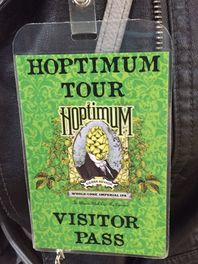


 RSS Feed
RSS Feed
